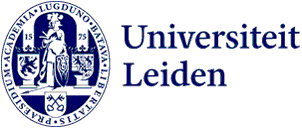
New academic student magazine kicks off with double issue: 'Had so many good submissions'
A year ago, assistant professor Paz Gonzalez received a Comenius grant to start an academic journal for and by students. Now the first double issue of The New Scholar is a reality. ‘We want to show the faculty’s diversity.’
In fact, the first issue of The New Scholar wasn’t supposed to be published for another six months. ‘I’d figured we would spend the first few months having a quiet look at what we needed to do,’ says Gonzalez. ‘Who could we ask to be reviewers? How do you make a call for papers? How could we set up the digital platform? It seemed like more than enough if we just found the answers to questions like that, but my student assistants proved that when students want something, they’re unstoppable.’
Working hard, but not on weekends
Those student assistants are Albert Ferkl, Jai von Raesfeld Meyer and Jonathan Stumpf, who made up the first editorial team. ‘They got along great as a team and did incredibly well,’ says Gonzalez. ‘After I gave them the chance to fast-track the journal, I could just sit back and relax so often in the editorial meetings. I only needed to make a few minor adjustments from time to time. For example, that we wouldn’t be sending WhatsApps to each other at 11 o’clock at night. And that the weekend starts at five o’clock on Friday.’
Diverse content
The hard work has certainly paid off. Out of 45 submissions, the editors selected 12 contributions that together form a double issue. ‘We wanted to show the variety of the faculty,’ Gonzalez explains. ‘For example, the level of the authors ranges from undergraduates to research master’s students. We also made the selection on the basis of diversity of content. Some literature papers that were really good, for example, we’ve saved for the next issue, so that we wouldn’t put too much emphasis on one topic.’
Two more issues and then what?
Preparations for that second issue have already begun, led by a new editorial team. ‘I told them it’s going to be tough for them because the last team did such a great job,’ says Gonzalez. ‘But I also told them that this doesn’t mean everything is now fixed. The new editors can do things their own way.’ This freedom applies not only to content, but also to form. Gonzalez: ‘The content must be academic, but apart from that, anything is possible; for example, even a poster presentation, a video or a photograph with a caption.’
Thanks to the Comenius grant, Gonzalez has enough budget to produce three issues of the journal. ‘After that, I’m going to be hassling people in the faculty to keep it going in the long term,’ says Gonzalez. ‘The grant was intended to give students the opportunity to publish and collaborate in an academic context. The submissions ranging from undergraduate to research master’s level prove that students really have a need for this, and the editors’ enthusiasm proves it too.’ And there’s also plenty of international interest. ‘In November, for example, I’m going to talk about this project at a conference for the second time. We mustn’t lose the journal when the grant comes to an end.’
